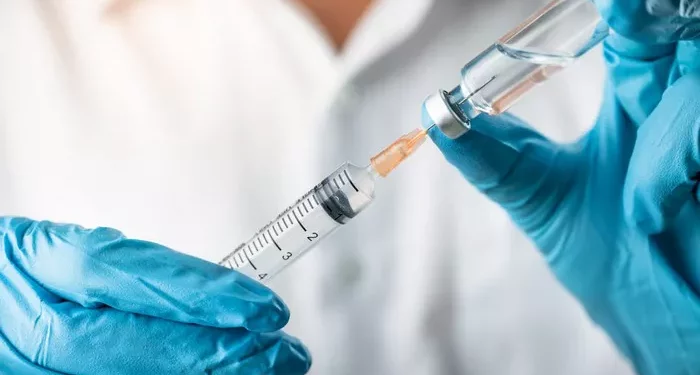Shingles is a painful rash caused by the varicella-zoster virus, the same virus that causes chickenpox. While shingles can affect anyone who has had chickenpox, understanding the financial impact is crucial for managing this condition. This article will explore the costs associated with shingles, including medical expenses, treatment options, and potential indirect costs.
Understanding Shingles
Shingles is characterized by a painful rash that usually appears on one side of the body. It can cause significant discomfort and may lead to complications like postherpetic neuralgia (PHN), a condition that causes long-term pain. Shingles is more common in older adults and people with weakened immune systems.
What Causes Shingles?
After recovering from chickenpox, the varicella-zoster virus lies dormant in the body. It can reactivate years later, resulting in shingles. Factors that may trigger this reactivation include stress, illness, and a weakened immune system.
Symptoms of Shingles
Shingles symptoms typically include:
Pain or tingling: Often felt in a specific area before the rash appears.
Rash: Red, blister-like lesions that can be itchy and painful.
Fever: Some people may experience mild fever or chills.
Fatigue: A general feeling of tiredness can accompany shingles.
Understanding these symptoms can help individuals seek prompt medical attention.
Direct Medical Costs
The cost of shingles primarily includes medical expenses for diagnosis and treatment. Below are the key components.
Doctor Visits
A consultation with a healthcare provider is often the first step. The cost of an office visit varies by location but typically ranges from $100 to $300. Many health insurance plans cover part of this cost, but out-of-pocket expenses may still apply.
Diagnostic Tests
In some cases, doctors may recommend tests to confirm the diagnosis. This might include a PCR test or a culture of the rash. The costs for these tests can range from $50 to $150, depending on the facility and insurance coverage.
Prescription Medications
Antiviral medications are the cornerstone of shingles treatment. Common antiviral drugs include:
Acyclovir: Typically costs around $50 to $100 for a course of treatment.
Valacyclovir: Prices range from $100 to $200 for a complete treatment.
Famciclovir: This medication may cost between $150 and $250.
While these medications can significantly reduce the duration and severity of shingles, they can still be a considerable expense.
Pain Management
In addition to antivirals, pain management is a crucial part of shingles treatment. Over-the-counter pain relievers like ibuprofen or acetaminophen may cost around $10 to $20. However, some patients may require prescription medications for severe pain, which can range from $50 to $300.
Topical Treatments
Topical treatments, such as creams or patches, can help relieve pain and itching. The cost for these products ranges from $10 to $50, depending on the brand and formulation.
Indirect Costs
Beyond direct medical expenses, shingles can lead to additional indirect costs. These may include lost wages, travel expenses, and increased healthcare needs.
Lost Wages
Many individuals with shingles may need to take time off work. The length of time varies, but it can range from a few days to several weeks. The financial impact of lost wages can be significant, especially for those without paid sick leave. For example, if an individual earns $1,000 per week and misses two weeks of work, the total loss would be $2,000.
Travel Expenses
Patients may need to travel to healthcare facilities for treatment. This can include gas, public transport, or parking fees. Depending on the distance and frequency of visits, travel costs can add up quickly.
Increased Healthcare Needs
Some individuals may require additional medical care, especially if complications arise. For example, postherpetic neuralgia can lead to prolonged treatment and increased healthcare costs. These expenses may include physical therapy or additional prescriptions, which can range from $50 to $200 per session.
Long-Term Costs of Complications
Shingles can lead to long-term complications, particularly in older adults. Understanding these costs is essential for managing the overall impact of the condition.
Postherpetic Neuralgia (PHN)
PHN is the most common complication of shingles. It can cause persistent pain that lasts for months or even years. Managing PHN can involve:
Ongoing medications: Prescription pain relievers may cost between $50 and $500 per month, depending on the medication.
Therapy: Physical therapy sessions can range from $50 to $200 each, and patients may require multiple sessions over several months.
Other Complications
Shingles can lead to other complications, including vision problems, skin infections, and neurological issues. Each of these conditions may require additional medical care and treatment, significantly increasing costs.
Preventive Measures
Preventing shingles can reduce costs associated with the condition. The shingles vaccine is a crucial tool in prevention.
Shingles Vaccine
The shingles vaccine is recommended for adults over 50. It can significantly reduce the risk of developing shingles and its complications. The cost of the vaccine varies but typically ranges from $150 to $250 per dose. Most insurance plans cover the vaccine, but patients should check their coverage details.
Insurance Coverage
Insurance plays a significant role in offsetting the costs of shingles treatment. Understanding what is covered can help patients manage their expenses effectively.
Types of Insurance
Private Insurance: Most private insurance plans cover doctor visits, medications, and the shingles vaccine. Patients should check their specific plan for details on coverage and co-pays.
Medicare: Medicare Part B covers shingles vaccinations, and Part D may cover medications. However, patients may have out-of-pocket costs depending on their plan.
Medicaid: Medicaid programs often cover shingles vaccines and treatments, but coverage can vary by state.
Conclusion
The cost of shingles can be substantial, including direct medical expenses and indirect costs. Understanding the financial impact is essential for effective management. Patients should discuss treatment options and preventive measures with their healthcare providers and explore insurance coverage to help manage costs. By being informed, individuals can take proactive steps to mitigate the financial burden associated with shingles.
Related topics:



























